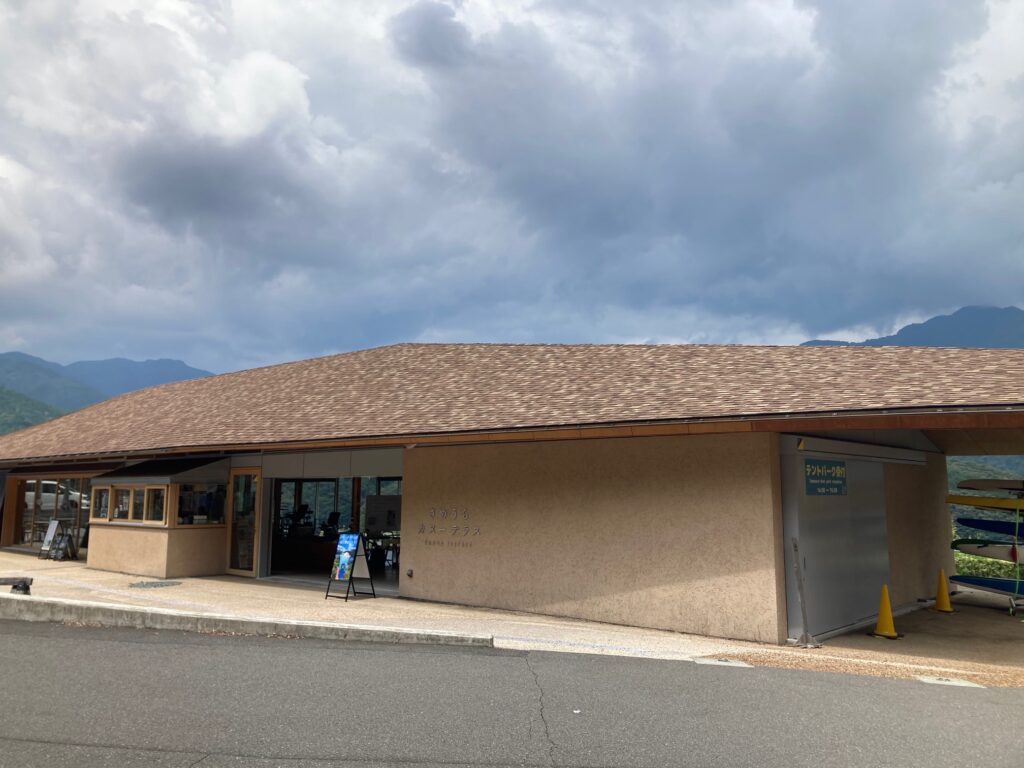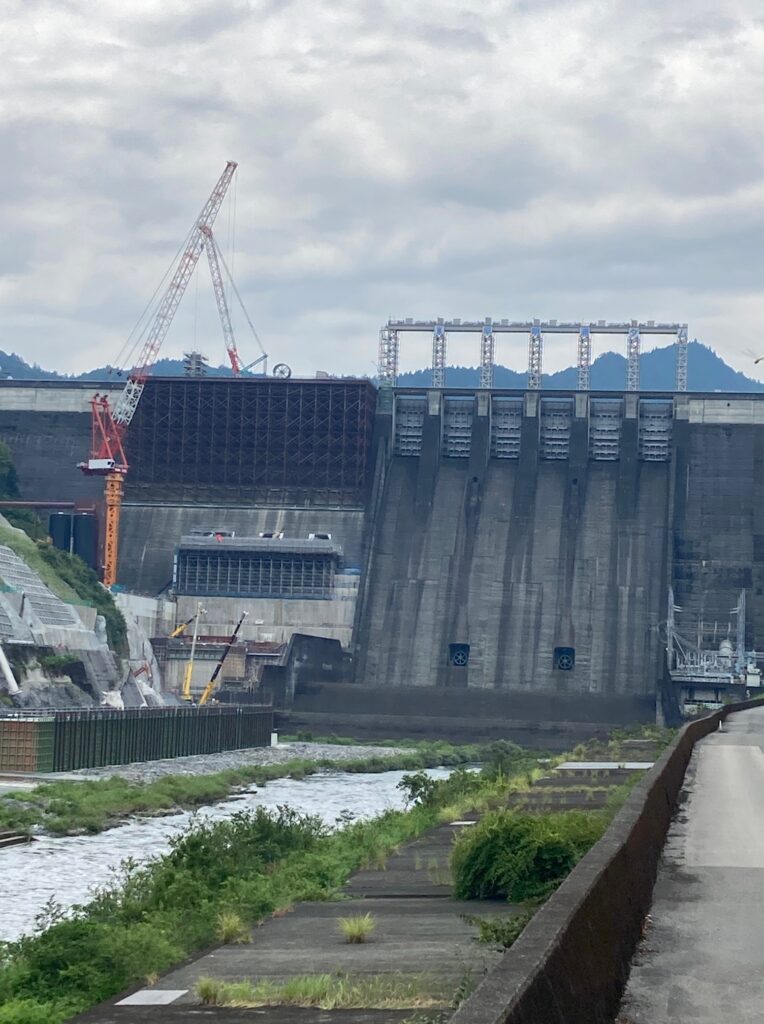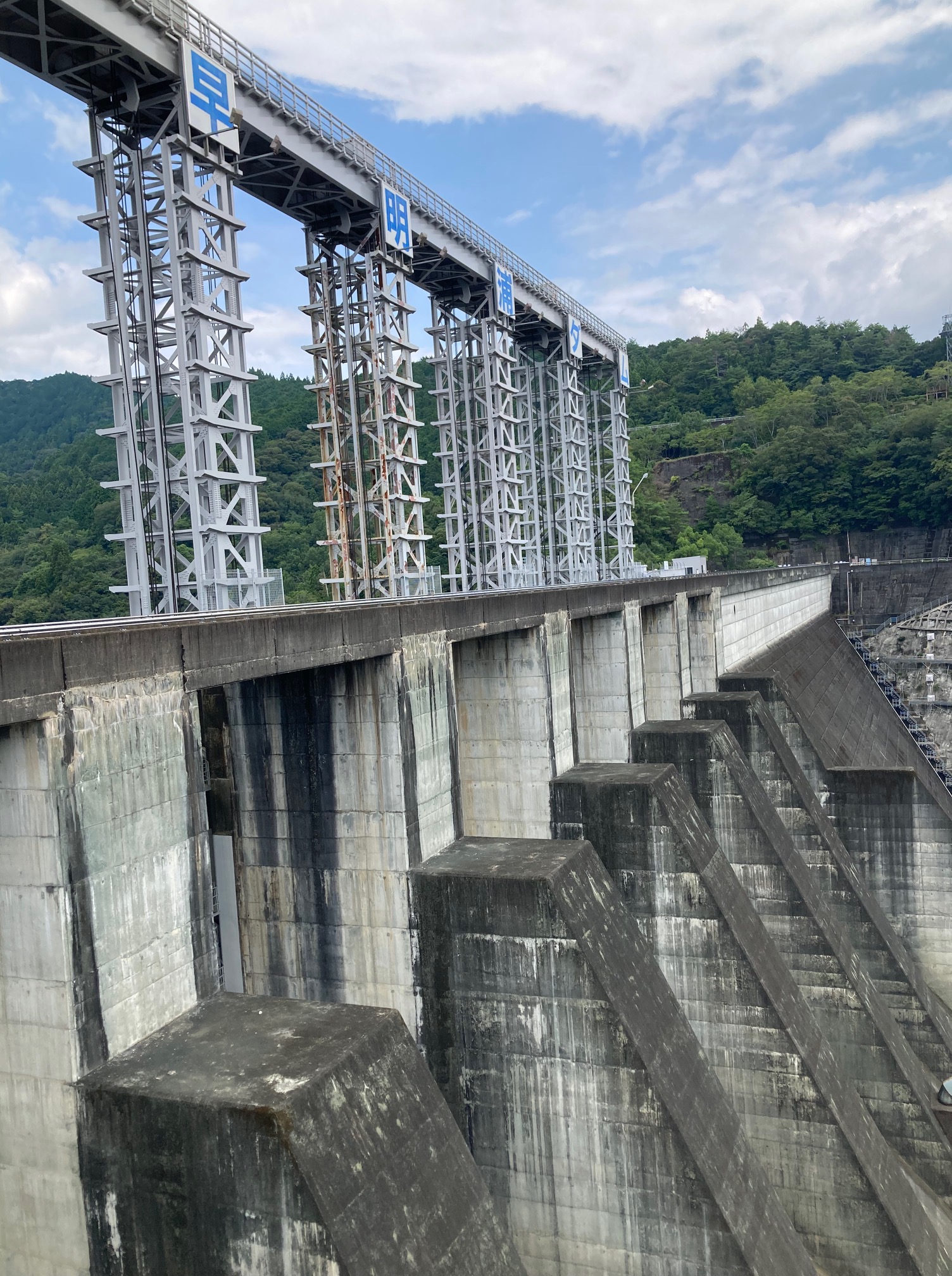Hello! I’m SacChi, a local blogger based in Kochi.
As part of the Tosanpo 2025: Satoyama Experience Festival in Tosa Town, I recently joined one of its most popular programs:
🎓 “Explore the Wonders of Sameura Dam – A 50th Anniversary Tour Guided by University Students!”
(Includes dam curry & specialty coffee ☕🍛)
📍 The Journey Begins at Sameura Canoe Terrace
Our meeting point was Sameura Canoe Terrace—a scenic activity hub by the lake in Tosa Town (146-1 Tai, Tosa Town).
With the Yoshino River shimmering in the background, this was the perfect starting point for the half-day tour.

After gathering with other participants, we headed to the nearby community center for:
- A short classroom session
- A field tour of the dam
- A lunch experience at Sameura-so, the local inn
📌 Since this tour was packed with content, this post will focus on Vol.1: The Introductory Lecture.
🌊 Sameura Dam 101 – Understanding the Power of Japan’s “Wild Rivers”
We kicked off with a surprising geography lesson—did you know Japan has three major wild rivers?
1️⃣ Tone River (Bandō Tarō)
2️⃣ Chikugo River (Chikushi Jirō)
3️⃣ Yoshino River (Shikoku Saburō) ← Kochi’s pride!
Stretching 194 km and covering a basin area of 3,750 km² (about 20% of Shikoku), the Yoshino River has long been prone to severe flooding.
🏞 What Is the Role of Sameura Dam?
As part of the Yoshino River Comprehensive Development Project, Sameura Dam was constructed in Tosa Town (6591-5 Tai) and celebrates its 50th anniversary this year!

It serves four essential purposes:
1️⃣ Flood Control
– Manages flows exceeding 800 m³/sec; the dam has controlled 129 floods in 50 years.
2️⃣ Water Storage
– Stores water to supply all four prefectures of Shikoku.
3️⃣ River Flow Regulation
– Maintains consistent water flow to protect downstream ecosystems.
4️⃣ Hydroelectric Power
– Provides clean, renewable energy to the region.
😲 Shock Fact: Kochi Gets Just 4% of the Water!
Out of the dam’s total storage of 863 million m³, here’s how water is allocated:
- Tokushima: 48%
- Kagawa: 29%
- Ehime: 19%
- Kochi: Just 4%!
I couldn’t help but ask the Water Resources Agency rep, “Shouldn’t Kochi charge the other prefectures?” 😅
Thankfully, he explained that each prefecture shares the cost of dam maintenance and upgrades—fair enough!
📢 Coming Up Next: Field Tour + Dam Curry Lunch!
This tour wasn’t just about lectures. In Vol.2, I’ll report on:
✅ A behind-the-scenes look at the dam structure
✅ A delicious dam curry lunch (complete with themed plating!)
✅ Specialty coffee served by the lake
Stay tuned—it was a one-of-a-kind experience!



コメント